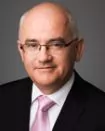The statistics are showing positive signs in the hotel industry. A report carried out by Amárach on behalf of AIB identifies a number of significant markers:
- 54% of hotels increased their turnover in 2012.
- 42% of hotels have not sought finance from their banks in the last 12 months.
- 55% of hotels plan to upgrade and refurbish their hotels over the next 3 years.
- 56% of bookings are sourced online compared to 31% over the phone.
Notwithstanding the positive figures, the report also identified that Ireland's 850 hotels have aggregate debts of €6.7 billion and more than 300 of these hotels are in financial difficulty. Of the €6.7 billion, €1.166 billion relates to finance for the acquisition of Jurys Inns by a group of investors led by Derek Quinlan.
A study by Crowe Horwath consultants identified that the five star hotels are leading a resurgence in profitability. This is particularly evident in Dublin where occupancy rates for these hotels were 74% in 2012 with room rates increasing by 10%.
Recent research by Christie & Co., shows that Ireland's hotel transactional market has come back to life, while market performance is showing renewed signs of growth and positivity. Following 25 consecutive months of growth, RevPAR across all Irish hotels is up 10.5% to €62 for the first seven months of 2013. In respect of Dublin hotels during the same period, RevPAR is up 11.3% to €67.76.
Key challenges for hoteliers in Ireland continue to include high local authority rates, which have predominantly not been reduced since the economic boom. The 900 hotels in Ireland encompassing 60,000 bedrooms pay approximately €90million a year to local authorities in rates. This equates to an average of €1,500 per bedroom, rising to high as €2,500 - €3,000 per room in some local authority areas.
Ireland had its 2014 Budget announcement last month, October 2013. This has added stability to the hotel market by maintaining the special 9% VAT rate for tourism related services. This should assist the Irish hotel market in remaining competitive with regard to tourism in comparison with competing markets overseas.
Encouraging signs in the Irish Industry include the announcement in the Budget of major vendor financing to be made available from NAMA during 2014 to kick start the industry and encourage both domestic and foreign direct investment. As we approach the end of 2013, there are signs of increased economic activity with regard to acquisitions by foreign entities. This is evident from the recent acquisition of Citywest hotel for €30 million; and Fota Island resort for €20million.
In comparing the UK market with Ireland, it is interesting to note that only 26% of hotel sales in the UK in 2012 were of distressed assets. 34% of buyers in 2012 were new entrants to the market with the balance being existing hoteliers expanding their portfolio. Insolvencies of hotel and leisure companies in the UK have reduced by 18.7% in 2012 compared to the previous year.
Hotel management is an increasingly active market on its own with groups such as Dalata, Tifco, Winward and Redefine BDL adding more and more properties to their portfolios each year with ever increasing revenues.
Other positive indicators for 2014 include the increase in events in Dublin for numerous high level conferences. The Convention Centre Dublin had 340,000 delegate days last year – an increase of 112% on delegate days for the previous year (www.cid.ie). The launch of Google's Foundry research centre in 2014 is expected to bring in an extra 15,000 foreign delegates each year. This influx should have a positive effect on the hospitality sector.
The content of this article is intended to provide a general guide to the subject matter. Specialist advice should be sought about your specific circumstances.







